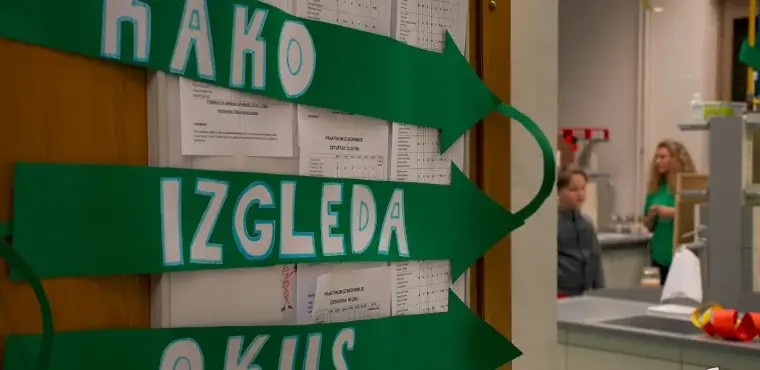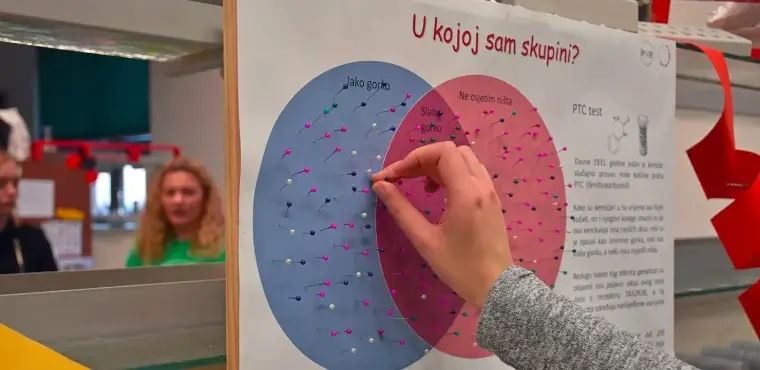Day and Night at PMF 2019: What does taste look like?
Bioinformatic groups participated in Day and Night at PMF 2019, where they presented how genetic differences influence taste perception through a hands-on PTC tasting experiment. Participants identified their genetic group by testing their own taste buds and learning about receptors and signaling pathways.
Authors: Paula Štancl, Kristian Bodulić, Petra Špicar, Bruno Pavletić
Menthors: Kristian Vlahoviček
In 1931, chemist Arthur Fox accidentally spilled a small amount of phenylthiocarbamide (PTC) powder. At the time, it was common for chemists to taste new substances out of curiosity. When Fox and his colleagues sampled the powder, they made an intriguing discovery: the taste of PTC varied greatly among individuals. Some described it as extremely bitter, others as mildly bitter, and some reported no taste at all.
Not long after this discovery, geneticists uncovered the reason behind this variation. The ability to taste PTC depends on the TAS2R38 receptor, which is determined by inherited variants of its gene. In Croatia, a study conducted in 1962 examined the PTC tasting ability of 200 participants. Among them, only 55 individuals (27.5%) were unable to perceive the bitter taste of this compound.
The aim of this workshop was for participants to explore the fascinating world of receptors and signaling pathways through their own taste buds, identifying their genetic group based on the PTC test.



Share on social media


